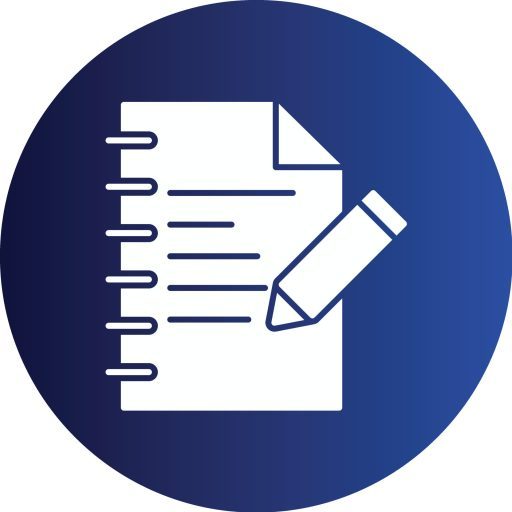Scenario
You are asked by your Senior Management Team (SMT) to draft a briefing paper for them about leadership and management development in your own organisation (or an organisation with which you are familiar). You will be evaluating what currently happens, making recommendations for improvement and justifying these. Your briefing paper needs to be objective and evidence-based, drawing on your own organisational knowledge and observations, as well as authoritative published sources.
At an initial meeting with your SMT you were asked to structure your paper around the following ten specific questions. Provide answers to each of these, aiming in each case to do so in around 390 words so that the total length of your assessment is 3900 words in length (+ /- 10% excluding references). You should answer each of the questions as fully as possible and you should take care to justify all the points you make.
Task
Question 1 (AC 1.1)
Explain how recent, current and potential future trends in your industry's business environment are combining to underpin the case for a review of current leadership and management development activities or programmes. Illustrate your answer with specific examples.
Question 2 (AC 1.2)
Explain the meanings of ‘leadership development’ and ‘management development’ making a clear distinction between these two functions.
Question 3 (AC 1.3)
Drawing on published models of contrasting leadership and management styles, explain the prevalent current approach in your organisation (or an organisation with which you are familiar).
Question 4 (AC 1.4)
Compare the knowledge, skills and behaviours of leaders and managers in your organisation (or an organisation with which you are familiar) and identify the areas they most need to improve in. Justify your answer.
Question 5 (AC 2.1)
Drawing on your wider reading, identify two different ways in which the people management team in your organisation (or an organisation with which you are familiar) could support established leadership and management practices and programmes.
Question 6 (AC 2.2)
Drawing on your wider reading evaluate two different approaches to leadership and management development that you would like to see adopted or further developed in your organisation (or an organisation with which you are familiar). Justify your answer.
Question 7 (AC 2.3)
Discuss your organisation's (or an organisation with which you are familiar) current approaches to leadership and management development in terms of their effectiveness in consistently meeting core equality, diversity and inclusion (EDI) objectives. Justify your answer.
Question 8 (AC 3.1)
Identify two stakeholders and explain their involvement in leadership and management development initiatives in your organisation (or an organisation with which you are familiar)
Question 9 (AC 3.2)
Evaluate the extent and nature of the methods used by your own organisation (or an organisation with which you are familiar) to evaluate the impact of its leadership and management development activity. Drawing on your reading explain how this might be improved. Justify your answer.
Question 10 (AC 3.3)
Assess two specific business benefits that can accrue to organisations which invest in first-rate, up-to-date, evidence-led leadership and management development programmes.
|
Your evidence must consist of: • • |
Assessment Criteria Evidence Checklist
You may find the following checklist helpful to make sure that you have included the required evidence to meet the task. This is not a mandatory requirement as long as it is clear in your submission where the assessment criteria have been met.
|
Assessment criteria Evidenced Y/N |
Evidence reference |
||
|
1.1 |
Explain the external factors |
|
|
|
1.2 |
Explain the meanings of |
|
|
|
1.3 |
Explain the contrasting styles |
|
|
|
1.4 |
Compare the different |
|
|
|
2.1 |
Identify the role people |
|
|
|
2.2 |
Evaluate a range of approaches |
|
|
|
2.3 |
Discuss why equality, diversity |
|
|
|
3.1 |
Identify and management development |
|
|
|
3.2 |
Evaluate the indicators of |
|
|
|
3.3 |
Assess leadership and management |
|
|
Assessment Criteria marking descriptors.
Assessors will mark in line with the following assessment criteria (AC) marking descriptors, and will indicate where the learner sits within the marking band range for each AC.
Assessors must provide a mark from 1 to 4 for each assessment criteria within the unit. Assessors should use the mark descriptor grid as guidance so they can provide comprehensive feedback that is developmental for learners. Please be aware that not all the mark descriptors will be present in every assessment criterion, so assessors must use their discretion in making grading decisions.
The grid below shows the range for each unit assessment result based on total number of marks awarded across all assessment criteria.
To pass the unit assessment learners must achieve a 2 (Low Pass) or above for each of the assessment criteria.
The overall result achieved will dictate the outcome the learner receives for the unit, provided NONE of the assessment criteria have been failed or referred.
Please note that learners will receive a Pass or Fail result from the CIPD at unit level. Referral grades can be used internally by the centre.
|
Overall mark |
Unit result |
|
0 to 19 |
Fail |
|
20 to 25 |
Low Pass |
|
26 to 32 |
Pass |
|
33 to 40 |
High Pass |
Marking Descriptors
|
Mark |
Range |
Descriptor |
|
1 |
Fail |
The response DOES NOT Insufficient examples Insufficient or no Presentation or
|
|
2 |
Low Pass |
The response demonstrates Sufficient acceptable Sufficient evidence of Answer is acceptable but Required format adopted
|

